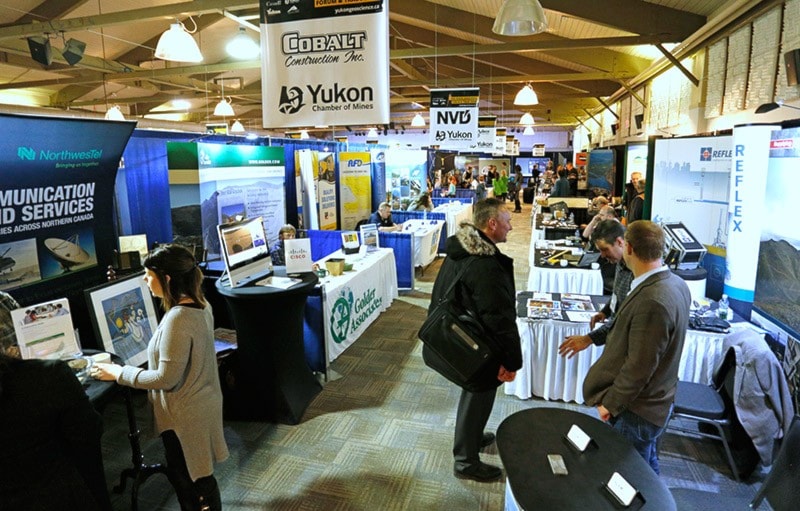For Yukon miners, last weekend’s Geoscience Forum & Trade Show must have been good cause for a party.
It’s been relatively bleak in the industry for the last few years, courtesy of a perfect storm of weak commodity prices, the resulting scarcity of financing for new projects and the regulatory uncertainty spurred in part by a great deal of legal — ahem — unpleasantness between the territorial government and Yukon First Nations.
But there are some signs of life. Metal prices are, with the notable exception of copper, stronger than they were at the start of the year. Gold prices, while well below what they were five years ago, are back above their 10-year average, thanks largely to the political uncertainty from Brexit.
The result, according to presentations by geologists from the Yukon Geological Survey earlier this week, is the best year for placer miners in a decade. They pulled more than 65,000 ounces of gold — worth roughly $90 million — out of the ground so far this year. Geologist Jeff Bond told a packed house at the geoscience forum that the total should top 70,000 ounces by the end of the calendar year.
Plus, a bunch of those placer miners get to be on TV! It’s a fun and lucrative secondary market.
And so here’s where the pointy-headed newspaper guy comes along to spoil the fun. The royalty rates Yukon miners pay are woefully low and need to change. Sorry, guys.
Right now, the Yukon government extracts a royalty rate of 37.5 cents per ounce of placer gold bound for export. That might have made sense during the Gold Rush when prices were $15 per ounce, which is the assumption the current royalty regime is based on.
But, just like Pierre Berton and smoking cigarettes in bars, the days of $15-an-ounce gold are gone and are never coming back.
The Tr’ondek Hwech’in First Nation received all of $69 in placer royalties this year. The only good thing about that figure is that it’s more than than the $36 they got the year before. “That is very insulting,” Chief Roberta Joseph told our reporter last weekend. One gets the sense that Joseph is being diplomatic in that assessment.
This is not the only area in which Yukon’s royalty regime is falling short. The larger royalty regime only shares revenue from mining on Crown land if the Yukon government takes in more than First Nations do from royalties on Category A settlement land. This might make sense on paper, but in practice, it has warped the results.
Because Yukon’s lone operating hard rock mine — Minto — pays more in royalties to the Selkirk First Nation than the Yukon government earns from royalties, the unintended consequence is to freeze out other First Nations from royalty sharing. While this applies to Crown land and not settlement land, it’s worth remembering that all of Yukon is on the traditional territory of one First Nation or another.
To be sure, cost competitiveness matters for miners, particularly for those in the placer industry. It doesn’t take much to push a project into the red. That’s why, for example, the coming carbon pricing regime is viewed with such apprehension by the Klondike Placer Miners’ Association.
Still, placer royalties need to increase, but not without consultation between the government, self-governing First Nations and the placer mining industry. Everyone will have to give a little to come up with a rate that’s realistic and fair.
As for hard rock mining, the Yukon government needs to ensure a guaranteed portion flows to self-governing First Nations, who are, after all, adopting more and more governmental responsibilities. The 2012 resource revenue sharing deal between Yukon and Ottawa saw the territorial government’s share increase, but not that of First Nations.
Outgoing premier Darrell Pasloski steadfastly refused to reopen the Umbrella Final Agreement to change the cut that goes to First Nations. Meanwhile, the Northwest Territories’ next-generation devolution deal, which came into effect in 2014, sets aside up to 25 per cent for the 10 Indigenous governments currently signed on. What those governments get depends on how much resource extraction takes place, but at least it’s a guaranteed and predictable cut. “It’s not gazillions,” Sahtu Dene leader Ethel Blondin-Andrew told me in 2013,”but it grows.”
The new Liberal government has promised to turn over a new leaf with Yukon’s First Nations, though it made no specific promises about resource royalties. But you could add the issue to what is likely to be a lengthy agenda for the Yukon Forum, which premier-designate Sandy Silver has pledged to reboot.
Doubtless there would be outrage in some corners — the usual suspects who reflexively reject any idea that results in more revenue flowing to First Nations. That ugly element should be ignored. For the most part, modern miners understand the importance of doing right by the First Nations whose traditional lands contain Yukon’s resource wealth.
We often like to boast that our mining industry is a model for the world. The task for governments and industry should be to hammer out a revenue sharing agreement that ensures Yukon’s mining industry is competitive and fair for everyone. In other words, a gold standard.
Contact Chris Windeyer at editor@yukon-news.com.
